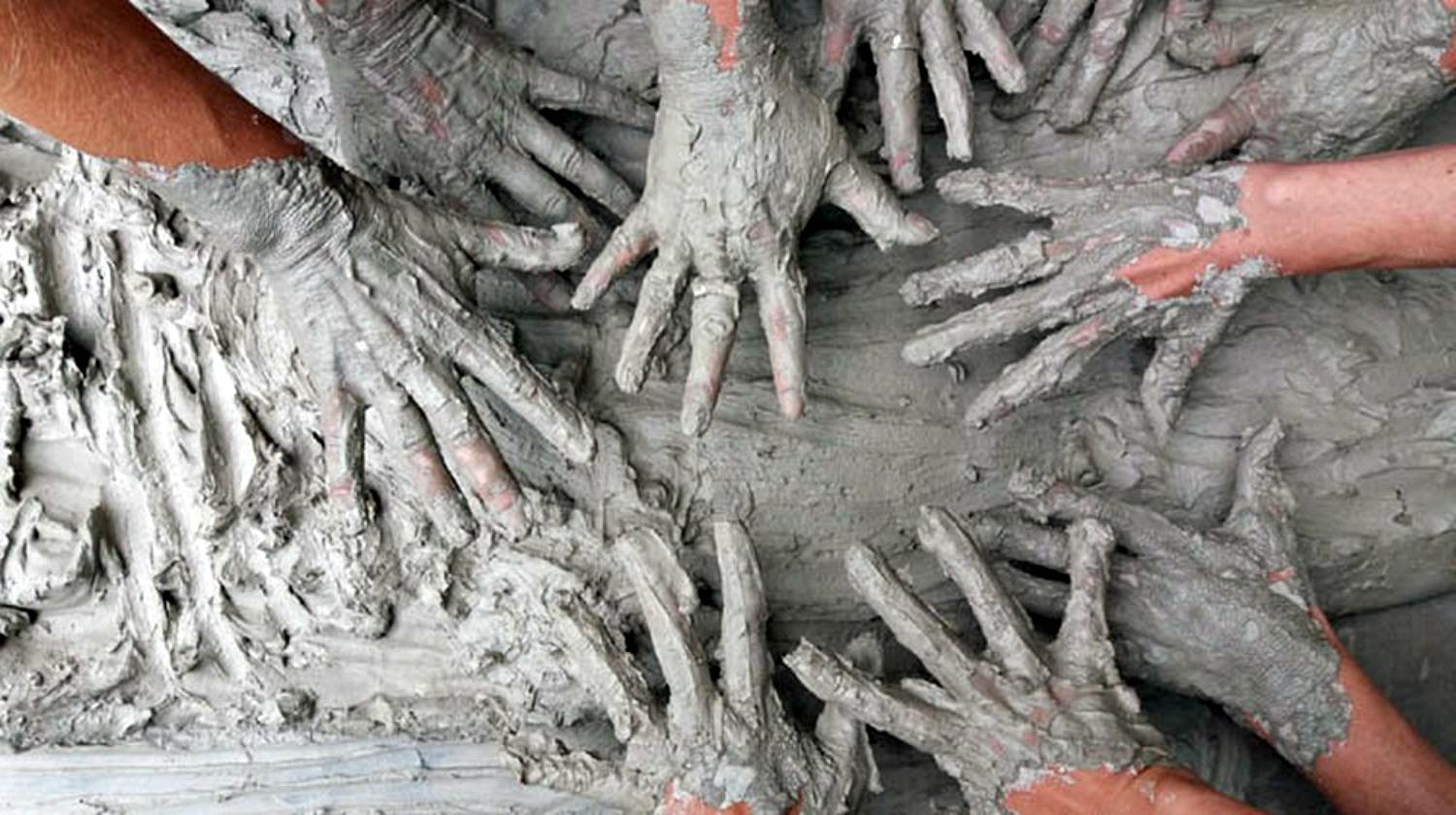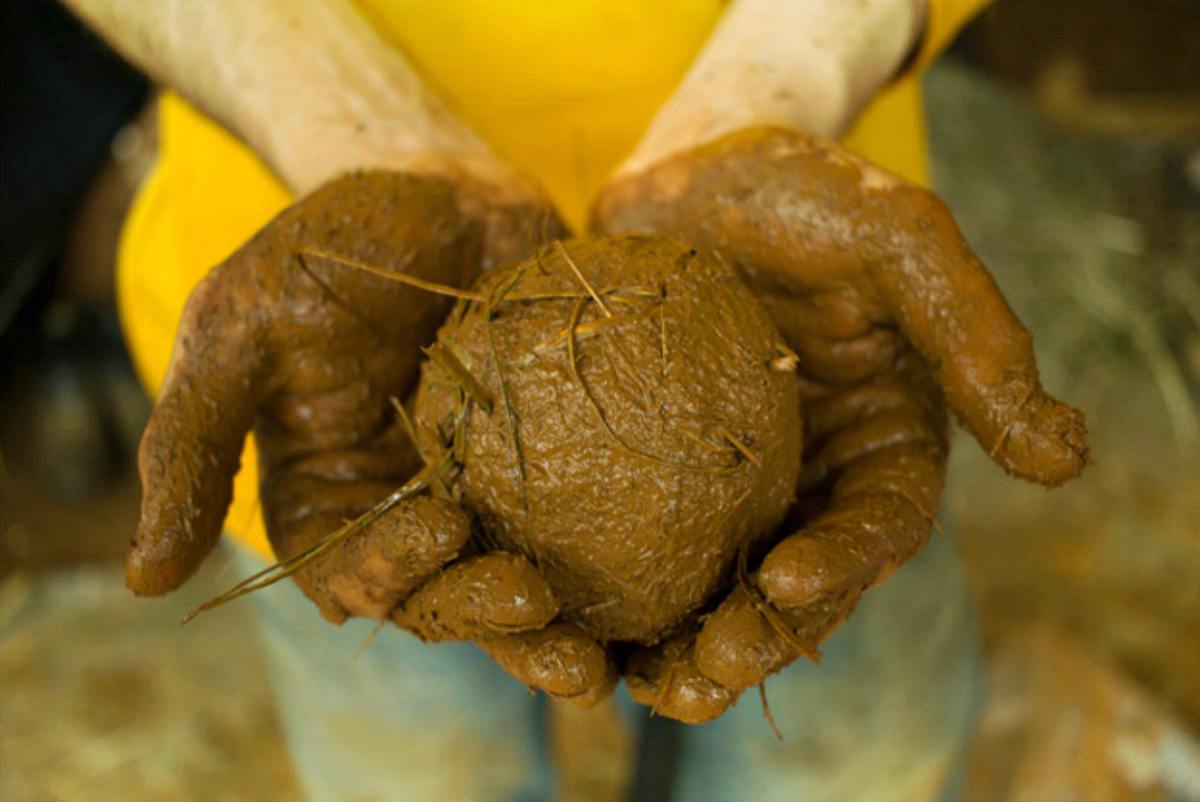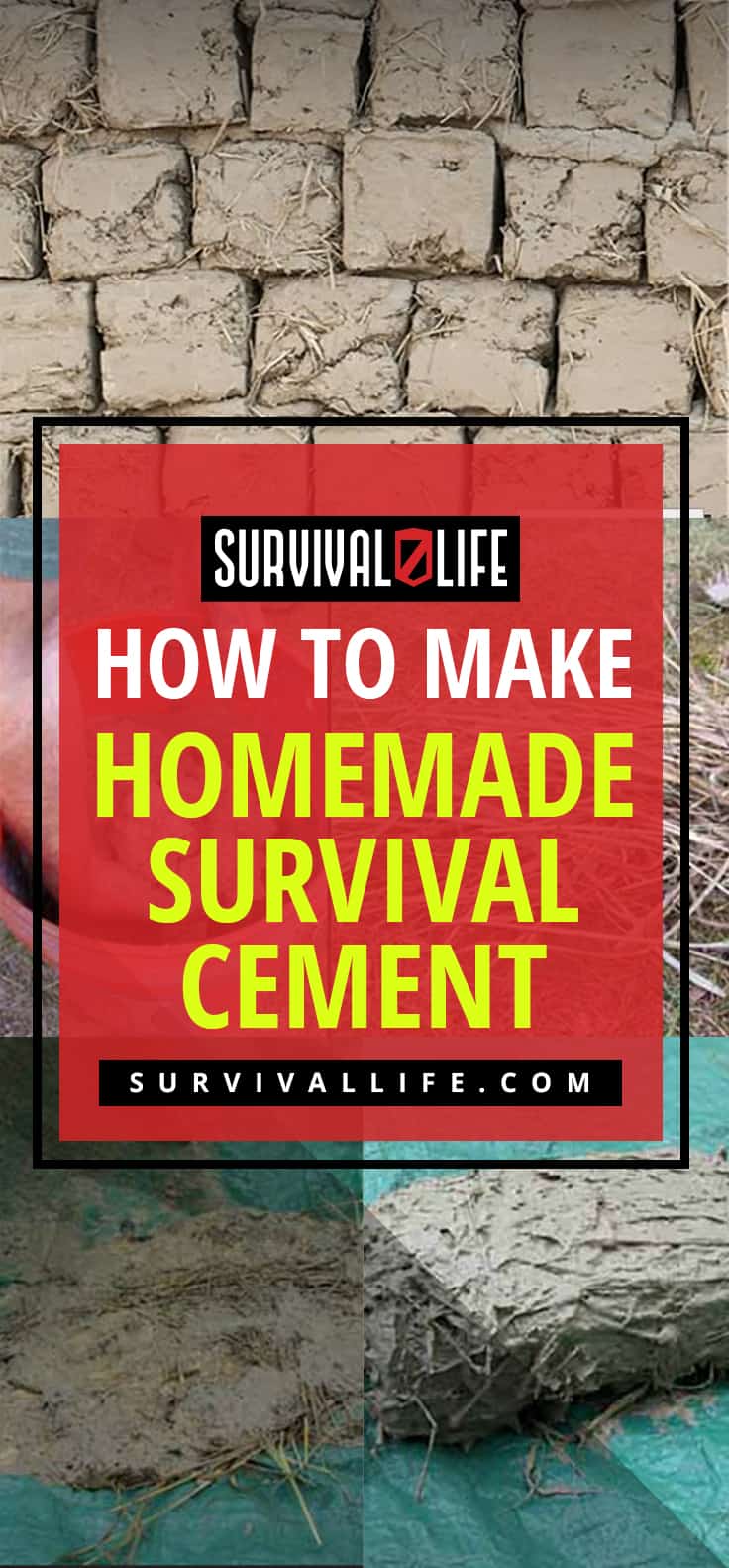Building
How To Make Homemade Survival Cement

Make your own survival cement with this guide and build yourself a sturdier building wherever you find yourself!
DIY Homemade Survival Cement You Should Know
Building Temporary Shelter with Homemade Survival Cement
Many people overlook homemade survival cement, but it’s an essential component of off-the-grid living. That’s because there are many uses for survival cement.
If you are trying to survive in the wilderness or if a disaster destroys your home, homemade concrete could be your saving grace. So now, you just need to know how to make it.
As long as you can find suitable dried glass and clay, you can use homemade survival cement to build a temporary dwelling strong enough to keep you safe from harmful elements and animals.
You can also use it to build an oven inside your mud hut. You just need to put some effort into turning the mud and grass into cement, though.
Then, you can start building habitable structures if you ever have to make it on your own out in the wilderness. Here is a peek at the original article. You can review the whole cement-making process here.
Steps to Make the Homemade Survival Cement
Step 1: Find a Source of Mud
What we have here is a natural mortar recipe for when you are making homemade cement from scratch. To make this homemade soil cement, you need to find a good source of clay.

The mud you will use for this homemade cement recipe should have as high a clay content as possible. (If you smash some of the mud into a ball and it retains its shape, you should be good.)
Step 2: Fill Up a Bucket
The great thing about homemade survival cement is you can use it to build just about anything you can think of. Whether you need walls for your dwelling, oven for cooking, or a food cache, you can use all the resources that nature can provide in order to survive.
Making homemade survival cement is easy and fun, and the end product is very useful. If you are planning a big project, fill an entire bucket with your ball of mud.
RELATED: For Preppers, Papercrete Is The New Concrete
Tips for Making Good Homemade Survival Cement
1. Aim for Thinner Texture
If you are using your survival cement as a mortar, create a mixture that is thinner and wetter so that it will fill each and every crevasse and joint. This is the ideal mortar mix.
What Is Mortar Mix? It is an important component in building structures that need to be thoroughly mixed. The ideal ratio in a mortar is one part masonry cement to three parts sand.
2. Cutting Your Grasses
Cut your grasses based on the length of the item for which you will be using your cement. If you are building a large structure such as a kiln or cementing over a shelter foundation, the grasses can be left much longer and placed so they run all in one direction as opposed to haphazardly throughout the mud.
This way, they act almost like re-bar. If you do not gather enough grass and have to go harvest more mid-making, cover and seal your existing survival cement as best as you can while you are gone so it will retain the proper moisture content.
3. Water Moderately
If you must add water to help rehydrate your mud, do so a little at a time. It’s much easier to add more water than to try to re-create the proper consistency once the mud is soupy.
Check out this video from Corporals Corner for more ways to improvise concrete:
Survival cement has been used throughout eons of history in countless ways. This mixture of mud and grass can be used for a multitude of projects — from the construction of shelters, cooking structures, kilns, and food caches, to wrapping food for clay baking.
It is simple to make, the ingredients are easy to come by, and it is one of the most durable resources available in a primitive situation.
Got any more tips for building a strong shelter? Let us know in the comments below!
Up Next: How To Build A Shelter Using Natural Resources
For awesome survival gear, you can’t make at home, check out the Survival Life Store!
Follow us on Facebook, Instagram, Twitte
Disclaimer: The contents of this article are for informational purposes only. Please read our full disclaimer here.

Editor’s Note: This post was originally published on April 25, 2018, and has been updated for quality and relevancy.
-

 Do It Yourself7 months ago
Do It Yourself7 months agoParacord Projects | 36 Cool Paracord Ideas For Your Paracord Survival Projects
-

 Do It Yourself9 months ago
Do It Yourself9 months agoHow To Make Paracord Survival Bracelets | DIY Survival Prepping
-

 Do It Yourself9 months ago
Do It Yourself9 months ago21 Home Remedies For Toothache Pain Relief
-

 Do It Yourself10 months ago
Do It Yourself10 months agoSurvival DIY: How To Melt Aluminum Cans For Casting
-

 Exports8 months ago
Exports8 months agoAre Switchblades Legal? Knife Laws By State


Pingback: How To Make Homemade Survival Cement | Patriot Powered News
Pingback: Bushcraft Survival Skills: A Great Mindset for Resourcefulness and Preparation | Survival Life
Pingback: 19 Old-School Survival Skills Youll Wish To Learn Before SHTF – For Survivalists & Preppers
Linda Holding
October 10, 2016 at 1:50 PM
Hello this is awesome! I been wanting to repair stones on my home. And have a problem getting mortar. Can I use grass that I have as waste? Thanks a lot for great idea. Linda
Robert Hodge
October 18, 2017 at 11:47 AM
Buy limestone and sand to make your own if youmust. Or, just buy cement at the store if you can.
Anonymous
November 21, 2017 at 6:10 AM
Grass clippings would not be utile– long strong fibrous grass or reeds provide strength,
Pingback: 19 "Old World" Primitive Survival Skills You'll WISH You Knew Before TSHTF
Pingback: Survival Life's Ultimate List Of Survival Hacks And Skills
another_engineer
March 25, 2017 at 10:16 AM
and this article said nothing….
Russell Starr
June 15, 2017 at 10:29 PM
I forgot engineers need multi-angle drawing and detailed instruction to make up for lack of imagination.
cclancer23
November 22, 2017 at 11:45 AM
From yet another engineer…. NO!!!! we don’t NEED these things. We GENERATE these things so that folks that don’t know anything about what we design can replicate it successfully. Your how-to is…. lacking. You don’t even stipulate (or even vaguely suggest) that the mud bricks (not cement!) you describe need to dry before they can be used…. or offer any suggestions where clay can be found.
Chuck Nizzi
January 23, 2018 at 6:33 PM
As an engineer, if you are going to dry these bricks of mud clay try to dry them in a kiln, over a fire or similar heat source. The article was a bit lame and really is lacking, BUT if the SHTF and you got clay soil, weeds and water and time you might as well try to upgrade your shelter. Protect these from direct rain. The good thing is that these aren’t going to burn….
jjwat
September 17, 2018 at 5:19 PM
that is smart but not smart enough.
Jack
January 23, 2019 at 11:53 AM
I have been in the construction trade for over 40 years. I have work with engineers throughout my career, both electrical and mechanical eng. They all have a few things in common regardless of their field.
1. They are always right even when proven Wrong.
2. Their way is the Only way to do something even if it doesn’t work in the real world. (Looks Great on paper).
3. When you show them they have designed a “death trap” ( electrical const) and will never work they will get pissy about you showing them that with your experience and more years in the trade then they have, you’re right they’re wrong.
Now to be fair I have also met and worked with some Great engineers also. But they usually have several years in their field and are more open to talking about alternative approaches to design problems.
So it is my guess that the engineers criticizing this article are either very young or very narrow minded. The article was suppose to be a brief , not in depth as that would have taken much more space then was probably allowed for the author. One comment about he didn’t tell where to find the clay duhhhh. Is he expected to know where every clay bed in the North American is locate, another duhhhh. So to you engineers that showed your real world ignorance should stick to your paper and pencils and leave the rest of alone so we don’t have to write replies like this.
The article was well done for anyone who understood the need for brevity.
I do want to thank those negative responding engineers for giving me the opportunity to vent my 40 plus years of dealing with their narrow minded kind.
Jack
January 23, 2019 at 12:03 PM
Amen Russell. Brief and to the point. Are you engineers understanding this lol.
Anonymous
September 21, 2017 at 9:13 AM
Survival cement? It has been called Adobe for as far back as I am aware. It was the main building material in the southwest.
Beardog
March 27, 2018 at 9:17 AM
Yes indeed, call it what it is! Adobe. Period. Get a education before this author wrights a artical. Very lame.
Anonymous
June 6, 2018 at 11:35 PM
And yet the proof reader “Wright’s” about the “artical”?
Anonymous
October 15, 2017 at 5:44 PM
Cement is not mud and grass. You can make cement if you burn limestone in a fire until it glows incandescent. Let it cool and it will be brittle. You can pulverize it easily to a powder. This is quicklime and can burn you so be CAREFUL! KEEP DRY! It will create a lot of heat when rehydrated. Mix one part by weight with 2 parts sand, then add enough water to make it workable. This is basically cement and fine for repairing stonework. Never use Adobe for repairing stone or masonry walls. Adobe is pretty much what mud bricks are made of.
Robert Hodge
October 18, 2017 at 11:46 AM
This is the true Cement; not adobe that is just grasses and mud that are dried into a shape of a ‘brick’ of some sizes. Chinking between logs of early cabins was just mud and grasses. It often broke out and needed frequent repairs to keep the weather and wind out. Cement made from fired limestone is a far longer lived item–as long as the Roman aqueducts perhaps.
Galt
April 29, 2018 at 10:16 AM
“….As long as you can find dried glass ….”
I knew we were off to a bad start on this article on ADOBE. Got proofreaders?
as others have noted, very incomplete article re: drying, forming etc. If you want to be taken seriously….
Robert Hallick
May 2, 2018 at 10:35 AM
I enjoyed the video very informative! The Romans often used sea water with the lime and volcanic ash. The structures in port areas were very noted for unique hardness .
Pingback: 19 “Old World” Primitive Survival Skills You’ll WISH You Knew Before SHTF - Survive!
Pingback: 14 Bushcraft Survival Skills You Need To Know - Prepared Survivalist
Pingback: 377 Survival Hacks And Skills You Should Know - Survive!
Pingback: Terra Cotta Pot Candles for Your Room | Survival Life
Pingback: Survival Skills Everyone Should Know And Be Able To Do - Survival Patch
Pingback: Warm a Room with Only a Candle and a Few Terra Cotta Pots - Survive!
Pingback: For Preppers, Papercrete Is The New Concrete | Survival Life
Pingback: How To Make Homemade Survival Cement | Primitive technology
Pingback: How To Make Homemade Survival Cement - Survival Patch
Pingback: For Preppers, Papercrete Is The New Concrete
Pingback: How To Make Homemade Survival Cement – Survival NEWS
Pingback: 19 “Old World” Primitive Survival Skills You’ll WISH You Knew Before SHTF | Primitive technology
Pingback: 25 Obscure Bushcraft Skills For Survival
Pingback: 25 Obscure Bushcraft Skills For Survival – Ultimate Survival Alerts
Pingback: 377 Survival Hacks You Should Learn in 2022 | Your Ultimate Survival Life Hacks Guide – Bulletproof Survivors
Pingback: 377 Great Survival Hacks You Should Learn in 2022 - Survival Shot